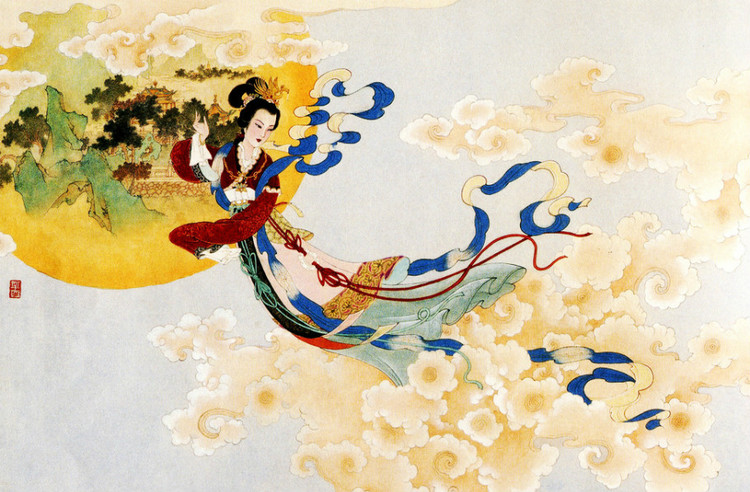Mid-Autumn Festival’s roots
Author : Source : 2014-09-12

Chang'e flying to the moon is one of the classical stories related to the Mid-Autumn Festival.
Mid-Autumn Festival falls on the 15th day of the eighth month of the Chinese lunar calendar. It is the most important traditional festival in China after Spring Festival, or Chinese New Year. It takes its name from the fact that it is always celebrated in the middle of autumn. It is also known as Moon Festival because at that time of the year the moon is at its roundest and brightest.
The following are some customs to celebrate this festival.
Full moon appreciation
The custom of worshipping the moon can be traced back as far as the ancient Xia (C.2070-C.1600BC) and Shang (C.1600-1046BC) dynasties. In the Zhou Dynasty (1046BC-256 BC), people held ceremonies to greet winter and worship the moon each year during the middle of autumn. People would offer tributes to the moon in the form of mooncakes, melons, plums, grapes and other seasonal fruits traditionally presented on a large table with incense.
In the Tang (618-907) and Song (960-1279) dynasties, people were more enthusiastic about enjoying the bright full moon. Traditionally, stores and restaurants would take on a new look by adorning each pailou (decorated archway) with silk and colored ribbons. Families would also get together to appreciate the moon and enjoy delicious mooncakes, or round pastry treats. Nowadays there are other popular activities, such as releasing candlelit lanterns and performing the fire dragon dance under the full moon.
Eating mooncakes
Mooncakes are round pastries with various fillings. Originally, they were offerings to the moon. People later combined the activity of appreciating the moon and eating mooncakes to symbolize the reunion of families. Mooncakes were originally made at home. In modern times, mooncakes are made in bakeries or by major food suppliers. The delicacies themselves are increasingly exquisite, boasting a wider variety of fillings and pleasing appearance. Patterns are also imprinted on the outer layer, such as the moon goddess Chang’e flying to the moon, three pools mirroring the moon, and others. Nowadays, people present mooncakes to relatives and friends to express festive wishes and wish them a long, happy life.
Customs of ethnic minorities
The Mid-Autumn Festival customs of offering sacrifices to the moon and inviting the gods is popular among the Zhuang people in the Guangxi Zhuang Autonomous Region. On Mid-Autumn Festival eve, at the village head and end people will prepare an altar lined with sacred offerings and incense. A branch or bamboo pole is used as a ladder for Chang’e to descend from the moon to the world before returning to the heavens.
This practice is divided into four stages: inviting Chang’e to descend to the world; antiphonal singing between the goddess and people; divination and fortune-telling by Chang’e; and bidding farewell to Chang’e through song.
Other customs among ethnic minorities include Mongolians “chasing the moon,” Tibetans “looking for the moon,” the Hezhe people’s “moon worship,” De’ang people’s “dating under the moon” and Miao people’s “teasing under the moon.”
Translated by Du Mei
Revised by Tom Fearon
Ye Shengtao made Chinese fairy tales from a wilderness
Ye Shengtao (1894–1988) created the first collection of fairy tales in the history of Chinese children’s literature...
-
How northern ethnicities integrated into Chinese nation
2023-09-18
-
Mogao caves
2023-09-12
-
Mogao Grottoes as ‘a place of pilgrimage’
2023-09-12
-
Time-honored architectural traditions in China
2023-08-29
-
Disentangling the civilizational evolution of China
2023-08-28
-
AI ethics in science fiction
2023-08-23














 2011-2013 by www.cssn.cn. All Rights Reserved
2011-2013 by www.cssn.cn. All Rights Reserved